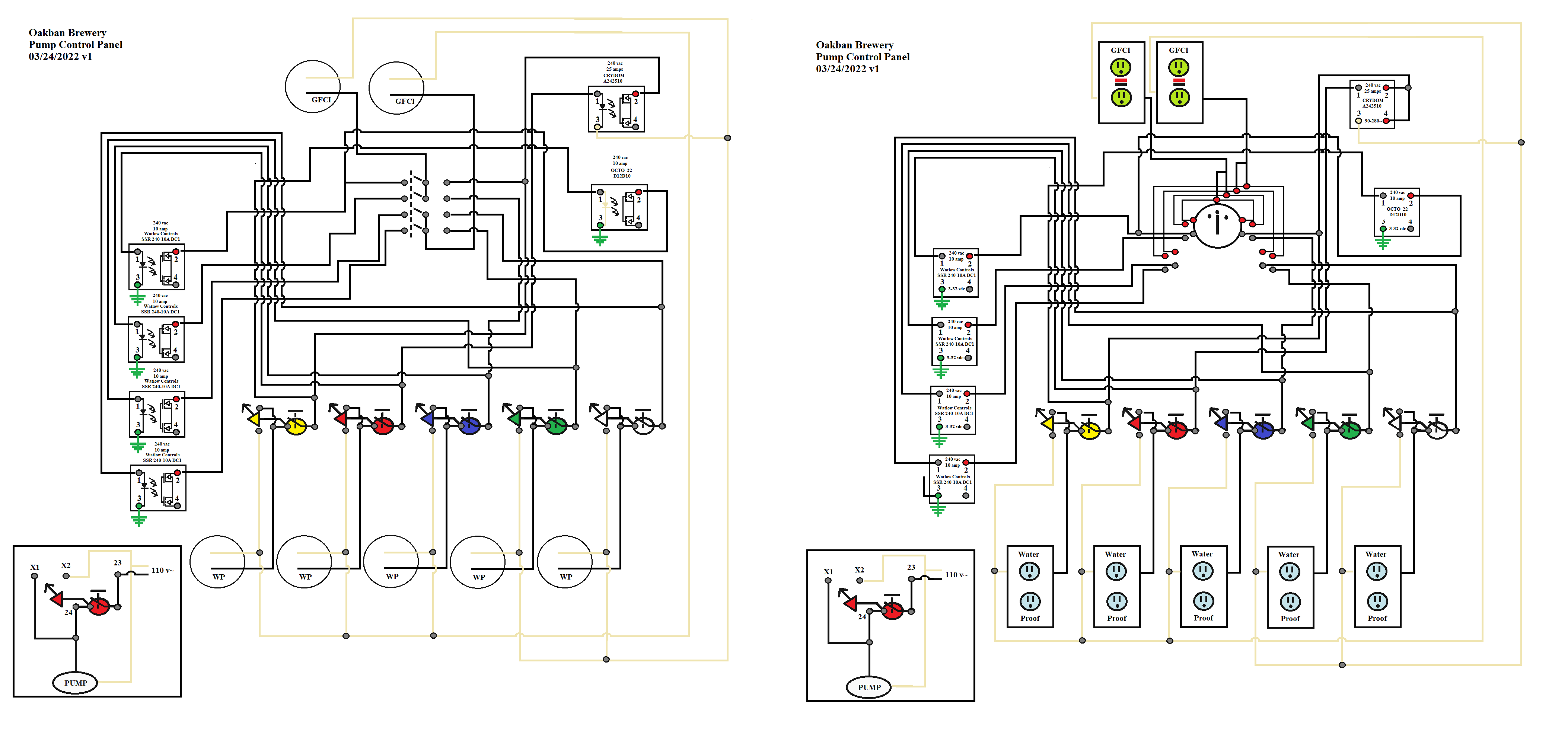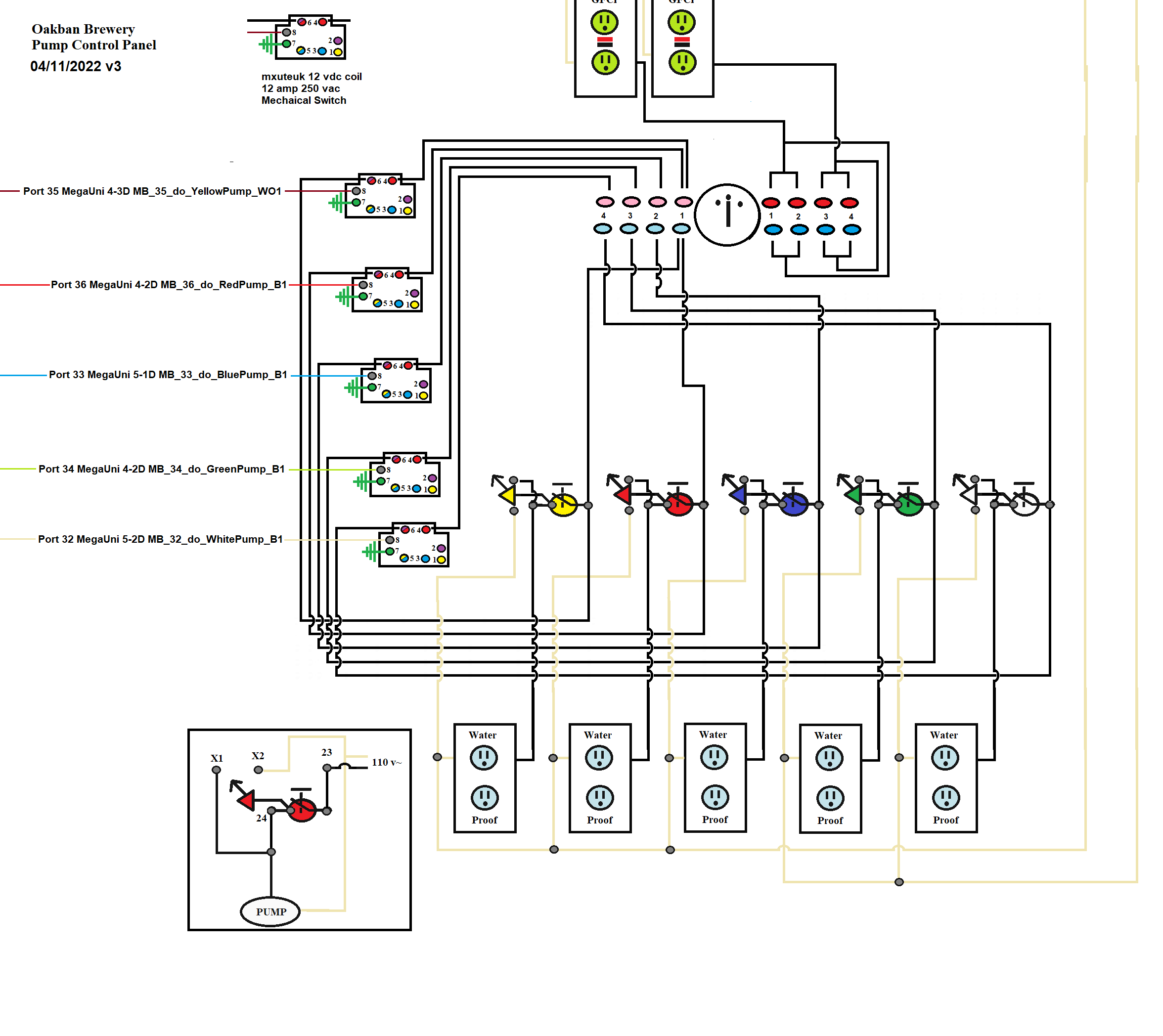Does anyone have a brewday flow chart for how you have set up brucontrol? I don't want all the script detail because I think the differences between systems will make it not so valuable. I have seen some nice setups with timers for each step and would like to see how it was done.
What I did was to write each step in my brew day no matter if something I could automate or not. I created steps in the scripts for each step and automate every one I could. In some cases, I did leave manual steps (such as turning on an Element after filling the HLT with water that I plan to automate later.
I created a switch (you could use a button) on my main Brew Page that has to be clicked to advance the script and do something (such as turn on the HLT Elements) when IO want or need to do something manually.
I control the flow with an incremental global value that allows me to control the flow (and skip thongs if conditions are met). The switch increments the value if needed. Automated items increment in the
script.
My plan started like this.
1. Fill Radiator ( a small HLT that I use for the HERMS bath) Auto stepped by a Timer (flow meter in the future). I can override the time with my switch.)
2. Fill HLT ( a Large HLT) Auto stepped by a Timer (flow meter in the future). I can override the time with my switch.)
3. Turn on Electric Elements. This is now a manual step that I must click the switch to advance and turn on the Elements. I plan to automate in the future.
4. Radiator at Temp and maintained.
5. HLT at Temp and maintained.
6. Transfer Strike Water to MLT. This is a manual step where I must click the switch to set the valves and turn on the appropriate pump. This will always be a manual step as it is the real start of a Brew Day as we heat the water during the night and come into the brewery with the water to transfer.
There is a Branch here in my Scripts if the Water needs to be Distilled for a lager, I heat the distilled water in my Radiator and will transfer that to the MLT and then refill the Radiator from the HLT.
The transfer is based on time and will auto advance (flow meter in the future). I can overide the Timer with my switch.
7. Wait for Strike ( we send the Strike Water a little hotter than necessary and let it cool to the strike.) { Much easier to cool that heat s trike water. We have a pause where we can fix if too low in the script.
8. Add Grain (Manual step)
9. Set hoses and pumps for Vorluft (Manual step and will always be.)
10. Vorluft (Auto by Timer)
11. Reset hoses for HERMS
12. Start Mash Timer (This turns on the pumps and sets the valves.
13. Mash step 1 (Auto by Timer) (generally skipped by advancing as timer is already at target)
14. Mash Step 2 (Auto by Timer) (generally skipped by advancing as timer is already at target)
15. Mash Step 3 (Auto by Timer)
16. 10 Minute Warning (Auto by Timer)
17. 1 Minute Warning (Auto by Timer)
18. Mash Over Alarm. (Auto by Timer) Turns off Pumps and heaters. Sets Valves from HERMS to Transfer to Brew Kettle.
19. Transfer First Run to Brew Kettle. Manual Step
20. First Run Transfer Complete
and so on. I then went back and added additional and intermediate steps.
1. Set Valves to Add Radiator Water. Manual Advance by Switch to start pre brew day.
1a. Branch if Lager and Distilled Water. I have a lot of globals for the recipe we are doing and one global is Distill or Not and the branch selected is by that global. If yes, do 1a.) Advance by Switch after adding Distilled water to the Radiator).
1b. If no, open Fill Valve.
1c. Time water to HLT (Flow meter in the Future). Wait Timer to advance.
1 c1. Override Timer by Switch if desired . Jumps to 3.
2. Shut off Fill Valve
3. Radiator Filled (Message on Screen and after a short delay, Auto Advance)
4. Set Valves to fill HLT (Auto Advance)
5. Open Fill Valve. Auto Advance
Time water to HLT (Flow meter in the Future). Wait Timer to advance.
5 a. Override Timer by Switch if desired.
and so on.


























































![Craft A Brew - Safale S-04 Dry Yeast - Fermentis - English Ale Dry Yeast - For English and American Ales and Hard Apple Ciders - Ingredients for Home Brewing - Beer Making Supplies - [1 Pack]](https://m.media-amazon.com/images/I/41fVGNh6JfL._SL500_.jpg)






